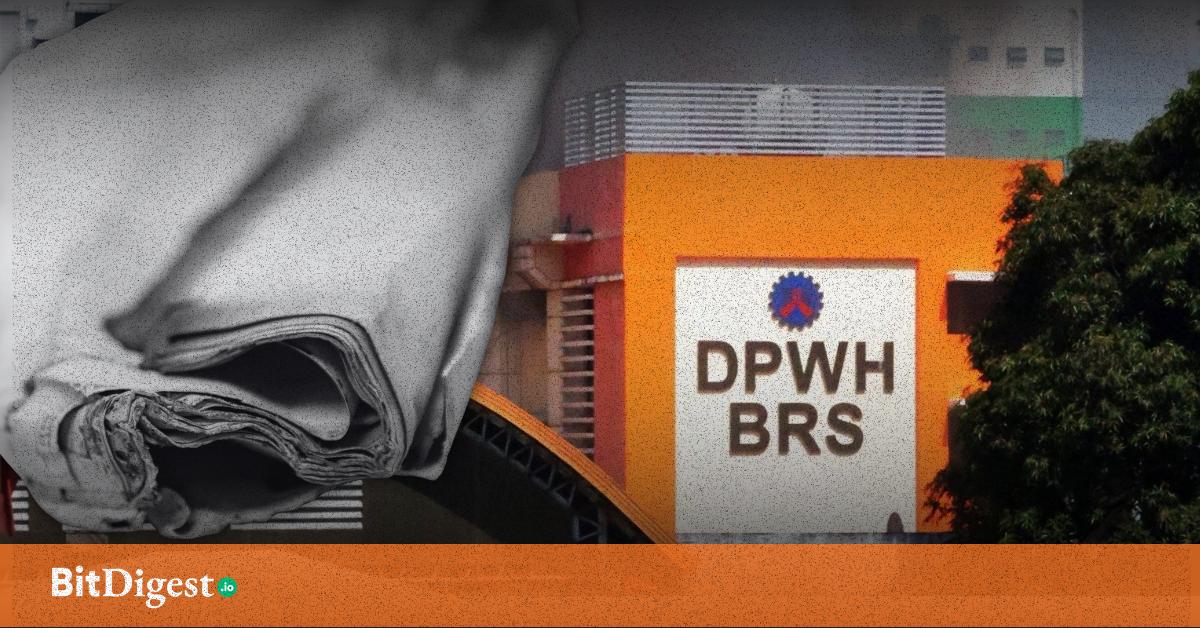We’ll Never Know, But We Should Have: What the DPWH Fire Reveals About Our Broken Records System
On October 22, 2025, fire caused by rumored arson engulfed the Bureau of Research and Standards (BRS) building of the Department of Public Works and Highways (DPWH) in Quezon City. The blaze, reportedly triggered by an exploding computer, lasted over an hour and reached a third alarm. The timing couldn’t have been more suspicious: just as the DPWH faces public scrutiny over flood control anomalies, a key technical office—responsible for testing, standards, and research documentation—goes up in smoke.
Officials were quick to reassure the public. DPWH Secretary Vince Dizon stated that no documents related to the corruption probe were housed in the affected building. But the public isn’t buying it, and frankly, they shouldn’t be expected to.
A Familiar Pattern of Evasion
This is not the first time infrastructure investigations in the Philippines have been met with claims that “the documents were lost,” or worse, were never recorded properly in the first place. When corruption is exposed, the same phrases return like clockwork: no files were affected, we’re still investigating, let’s wait for the results. Sometimes, the damage isn’t even from fires, but from poor record-keeping systems that make manipulation easy and accountability impossible. It may not be even far-fetched to say that the system is intentionally kept this way.
In this case, even if documents were not tied to the scandal, what was lost is still significant. According to DPWH Undersecretary Lara Esquibil, materials destroyed included calibration reports, soil and rock data, procurement records, field testing documents, pilot project files dating back to 2015, and quality assurance certificates.
Even more ironically, the agency had recently been preparing to launch its own blockchain pilot called Integrity Chain, a digital ledger designed to protect infrastructure data from tampering.
This moment demanded a serious reckoning, not PR spin.
Why This Is Exactly What the CADENA Act Was Meant to Prevent
Enter Senate Bill No. 1506, the proposed CADENA Act, which envisions a public digital portal that standardizes and secures the country’s budget records from the ground up.
Originally filed as Senate Bill No. 1330 in September 2025, the earlier version was more explicit about using blockchain technology. Its successor—SBN-1506—drops the term “blockchain” but retains the cryptographic and auditability principles, expanding its tech neutrality while doubling down on public access and tamper resistance.
At the heart of CADENA are several key features:
- Digital Signatures and Cryptographic Proofs: Every document must be traceable and verifiable. The platform must ensure that all uploaded data is signed, time-stamped, and impossible to retroactively alter without detection.
- Redundancy via Mirror Sites and Multi-Agency Integration: No single building, server, or office can be a single point of failure. Mirror portals and data redundancy are mandated to prevent total loss from accidents or sabotage.
- Public Access and Interoperability: All citizens, not just auditors or insiders, should be able to view budget releases, obligations, and procurements across all levels of government.
The National Budget Transparency and Accountability Council (NBTAC), composed of representatives from DBM, COA, DOF, and the Senate and House committees, is tasked with overseeing implementation. It ensures that tech adoption is not just performative, but aligned with national security and public interest.
Could CADENA Have Prevented the BRS Fire Fallout?
In an ideal future where CADENA is fully implemented and integrated:
- Calibration reports, test results, and technical specs—like those lost in the fire—would be digitally uploaded, cryptographically signed, and publicly auditable within days of their creation.
- Agencies wouldn’t be able to rely on statements like “we have scanned copies somewhere.” The existence, authorship, and timestamp of each document would be provable on record.
- Fire, sabotage, or corruption wouldn’t be enough to erase the truth. Transparency wouldn’t depend on trust, it would rely on verifiable proof.
This is not fantasy. It’s simply a matter of technical will and political commitment.
But There’s Still a Long Road Ahead
CADENA has passed the committee level as of November 2025 and is now awaiting further legislative action. Meanwhile, government agencies like DPWH continue to operate using fragmented, agency-dependent systems that remain vulnerable to everything from arson to quiet deletion.
To make CADENA work, the government must treat it not as an IT upgrade, but as a national anti-corruption infrastructure. One that complements broader digital governance goals like the eGovPH Super App, and closes the loopholes exploited by bad actors across departments.
Because if we let excuses like “those files weren’t there” go unchecked, we are effectively building our future governance on ash.
In a system built without verifiable digital safeguards, even accidents become political weapons. CADENA offers the blueprint to finally stop that, if we choose to build it right. The Bureau of Fire Protection stated that there is no foul play involved. Still, even if the DPWH fire may have been an accident; the thing is, with all things considered, the people will never really know.
.svg)


.svg) SHARE TO FACEBOOK
SHARE TO FACEBOOK SHARE TO TWITTER/X
SHARE TO TWITTER/X SHARE TO LINKEDIN
SHARE TO LINKEDIN SEND TO MAIL
SEND TO MAIL





.svg)


.svg)